Scheurich
Large Mid-Century Red Floor Vase - Scheurich "WEST Keramik" - Form 279-38 - 1960s
Large Mid-Century Red Floor Vase - Scheurich "WEST Keramik" - Form 279-38 - 1960s
Couldn't load pickup availability
Presenting a rare and impressive Scheurich WEST Keramik floor vase, model 279-38, from the 1960s.
This substantial piece stands at 38 cm tall and features a striking red glaze accented by dark brown stripes.
Notably, this early version of the 279-38 model is scarce, highlighting Scheurich's practice of reusing form numbers with slight design variations over the decades. The vase retains its original gold-foil "WEST Keramik" label, attesting to its authenticity and excellent preservation.
A remarkable example of mid-century West German pottery, this vase embodies the bold aesthetics of the era.
- Material: Ceramic
- Model: Scheurich 279-38 --> early form from the 1960s
- Style: Mid-Century Modern
- Technique: Hand-glazed
- Place of Origin: Germany
- Mark: 279-38
- Label: "WEST Keramik"
- Date of Manufacture: 1960s
- Condition: Good condition apart from a small chip on the upper rim, please see pictures
Dimension:
Height: 38 cm | 14.9 in
Diameter: 20 cm | 7.8 in
Weight: 2.5 kg
Share
- Worldwide Shipping
- Secure Packaging
- Loving Curation
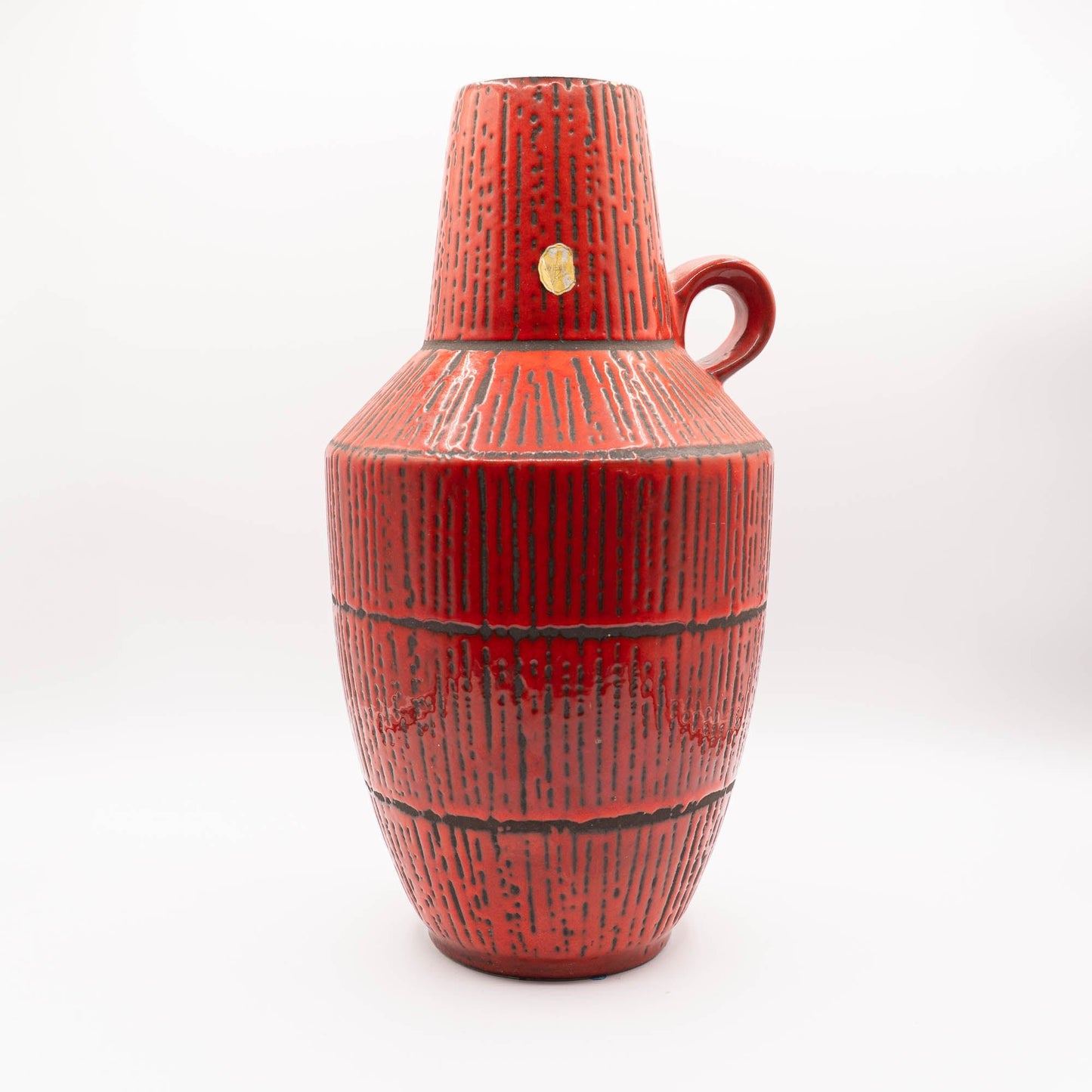
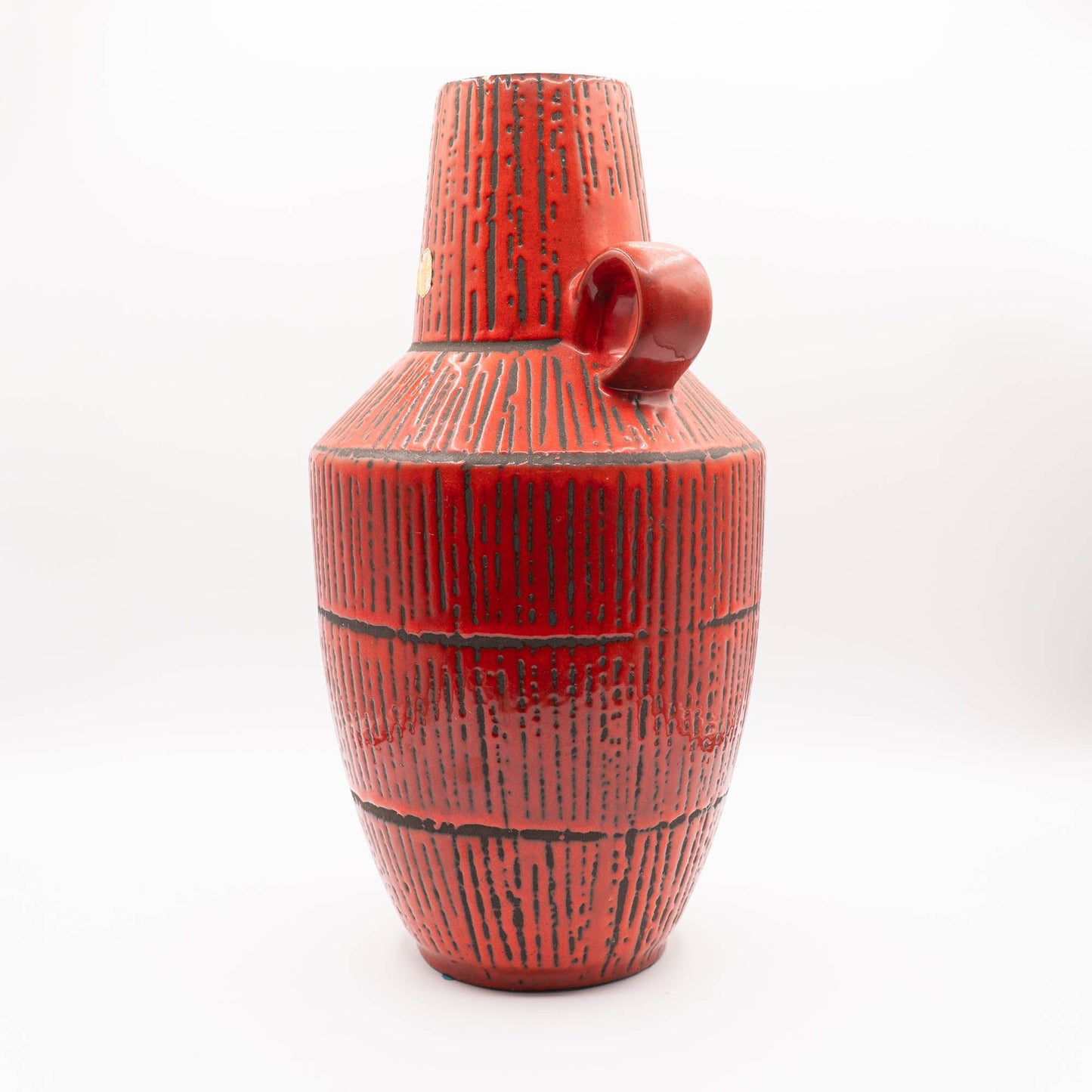
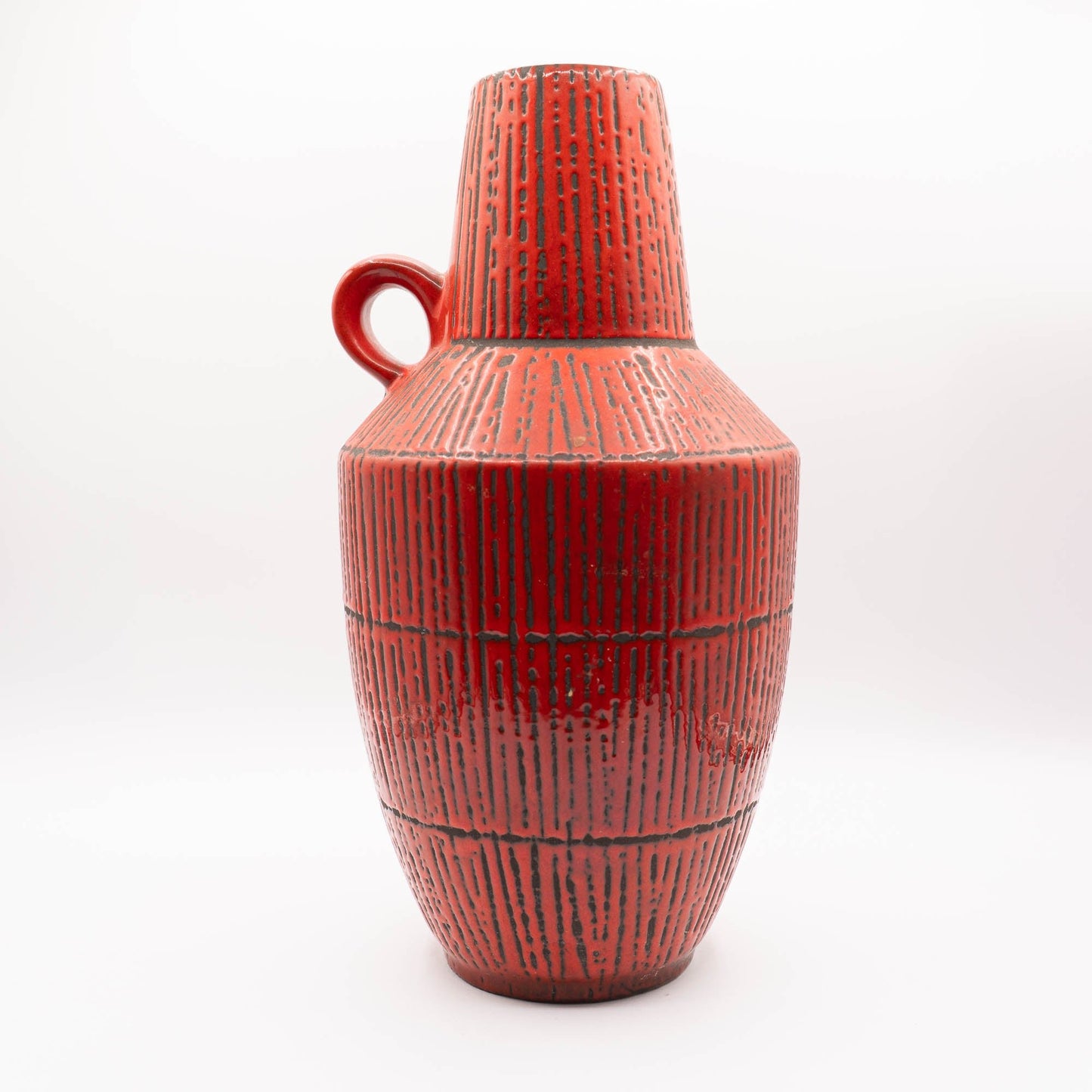
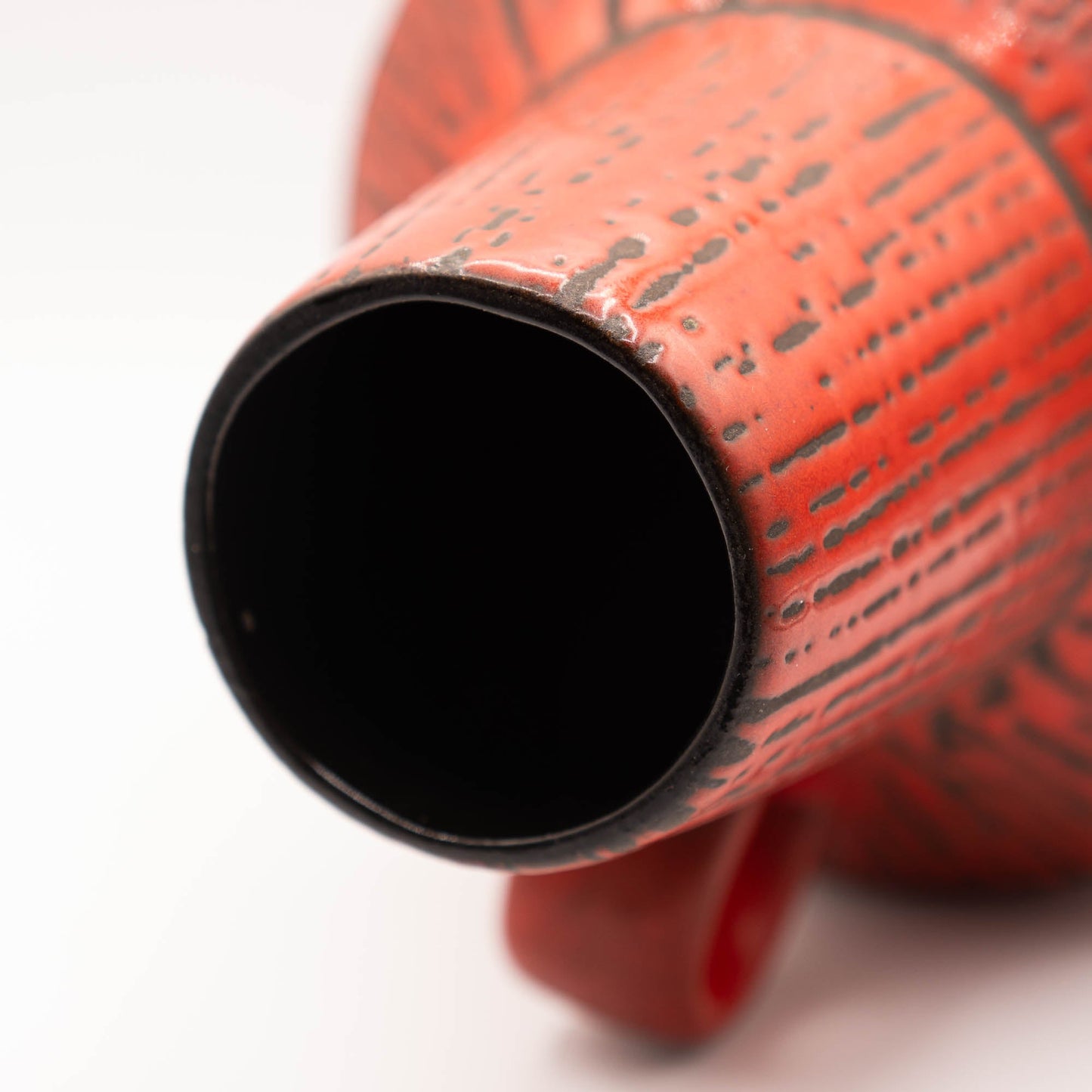
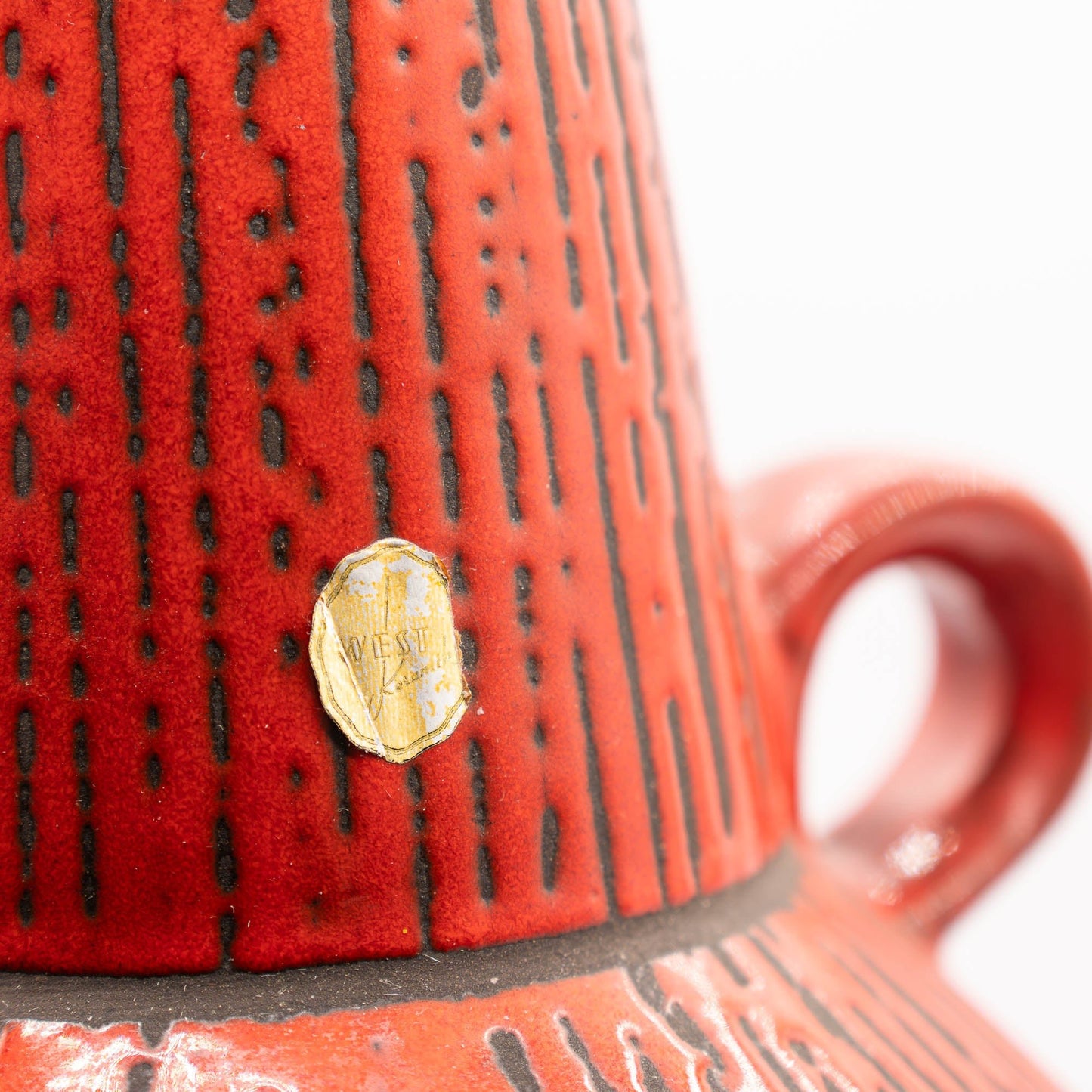
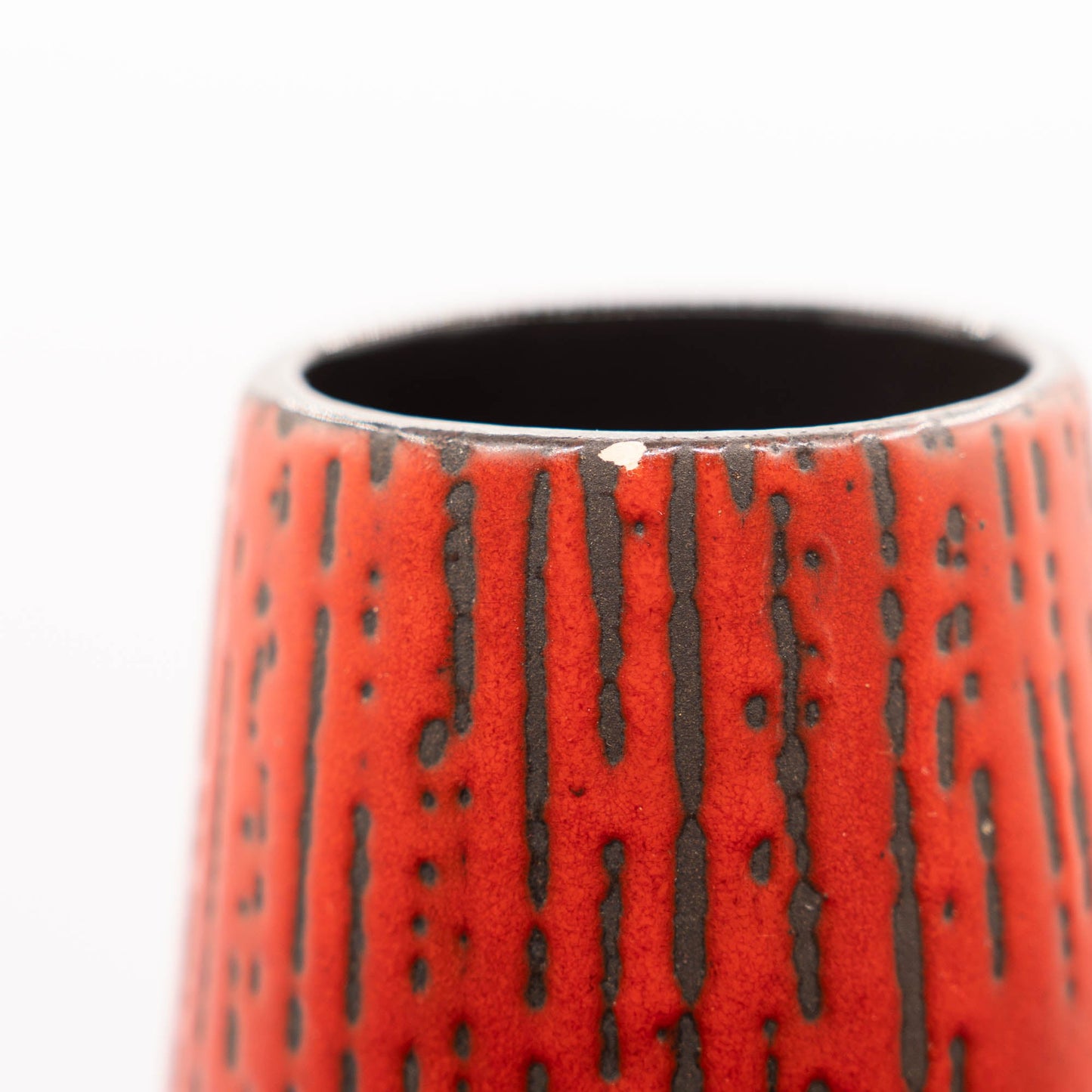
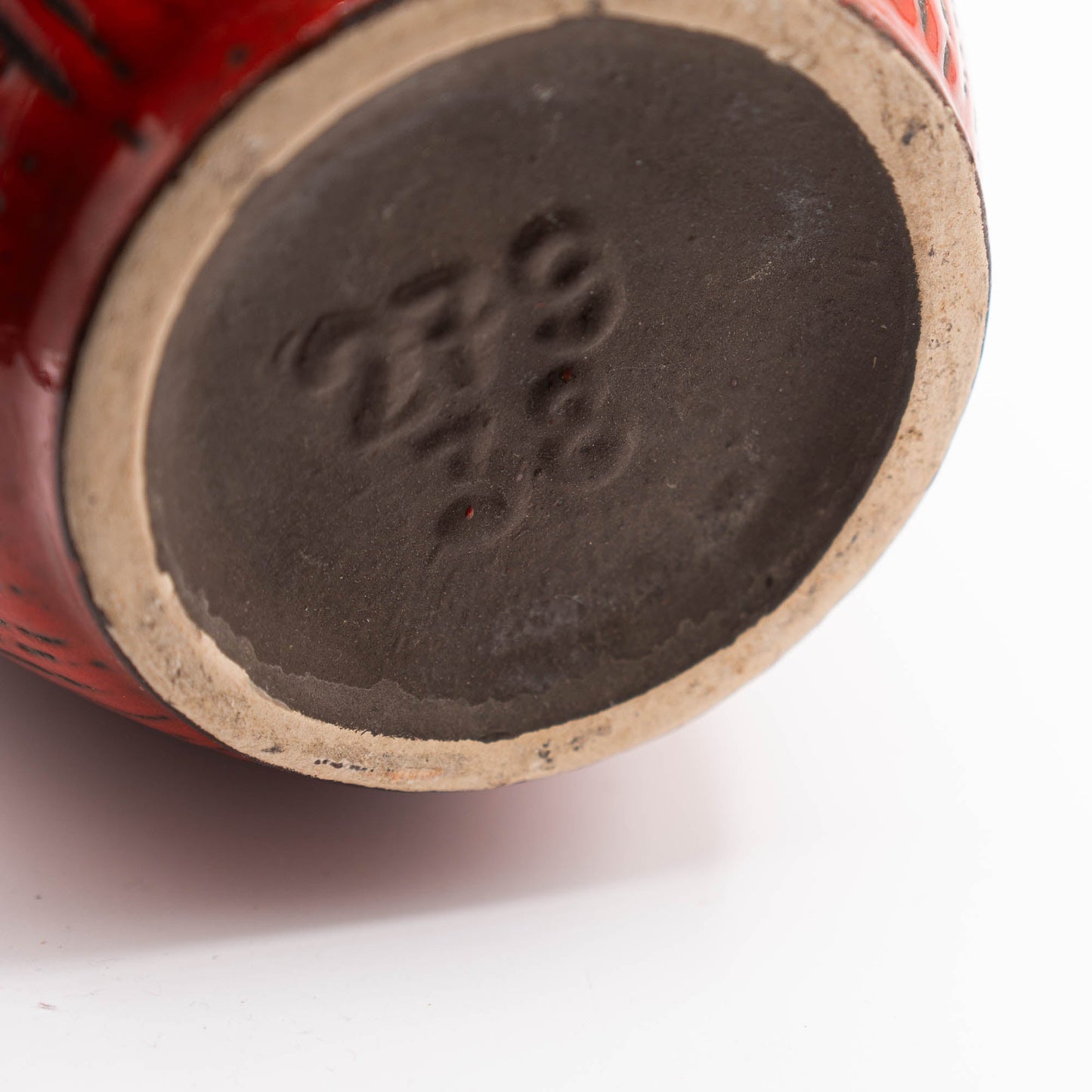
Origin & Maker
Scheurich, one of the most prominent names in West German pottery, was founded in 1928 and rose to fame during the mid-20th century. Known for its production of affordable yet high-quality ceramics, the company became a key player in the "Fat Lava" movement of the 1960s and 70s, characterised by bold textures and glazes. Scheurich’s extensive range of forms and designs, such as the popular "Form 242," showcased both hand-painted and moulded motifs, appealing to a wide audience. Their use of vivid colours, tactile surfaces, and intricate glazes made their pieces highly collectible today. Among their distinctive works, many vases, planters, and jugs are finished with deep, volcanic-like textures, giving them a timeless appeal.
One of the reasons for Scheurich's enduring success was their ability to innovate while maintaining affordability. Their design approach often drew inspiration from nature, incorporating organic shapes and motifs, with some pieces reminiscent of majolica in their glaze techniques. The company remains a celebrated name among collectors of mid-century and West German pottery, with many pieces, especially from the "Fat Lava" era, still in high demand.
Blog posts
View all-

A Serendipitous Morning at the Rue de Bretagne ...
There are few joys in life that match the thrill of stumbling upon a hidden treasure, and for me, flea markets hold that magical allure. One of my favourite flea...
A Serendipitous Morning at the Rue de Bretagne ...
There are few joys in life that match the thrill of stumbling upon a hidden treasure, and for me, flea markets hold that magical allure. One of my favourite flea...
-

Emile Bourgeois and "Le Grand Dépôt" in Paris
Recently, I found this stunning Sarreguemines wash set. It was at the Brocante in Belfort, France. On this day, we had got up at 4 AM to be there in...
Emile Bourgeois and "Le Grand Dépôt" in Paris
Recently, I found this stunning Sarreguemines wash set. It was at the Brocante in Belfort, France. On this day, we had got up at 4 AM to be there in...
-

The Legacy of Robert Haviland: A Journey from N...
The story of Robert Haviland porcelain is one of artistry, transatlantic ambition, and enduring heritage. It begins in the mid-19th century when David Haviland, an enterprising New Yorker, founded Haviland...
The Legacy of Robert Haviland: A Journey from N...
The story of Robert Haviland porcelain is one of artistry, transatlantic ambition, and enduring heritage. It begins in the mid-19th century when David Haviland, an enterprising New Yorker, founded Haviland...










